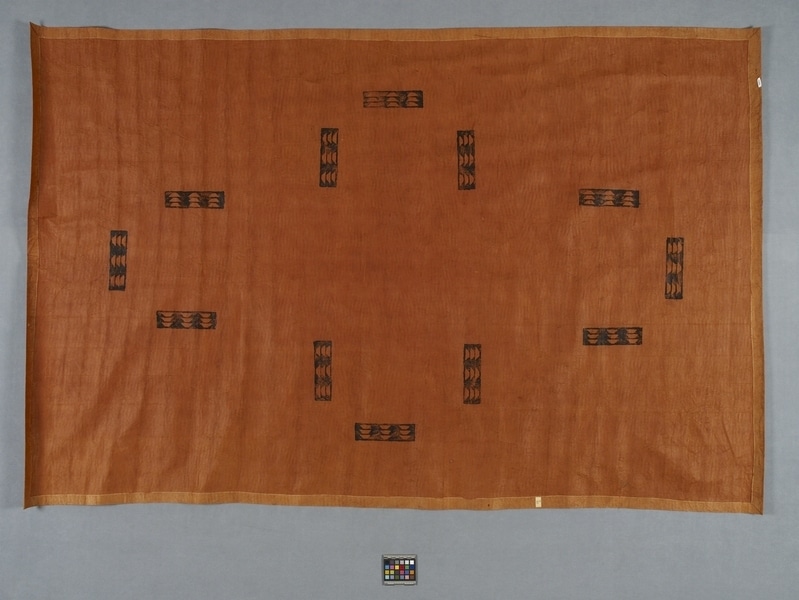Bark Cloth Item Number: Ac209 from the MOA: University of British Columbia


Description
Bark cloth cover decorated with twelve repeat rectangular designs in groups of three. Each rectangle contains nine triangular shapes divided into three rows. The edge is folded over towards the front and sewn in place to form a border.
History Of Use
Bark cloth is used for clothing and household furnishings across central, eastern and southern Africa. The Ganda (or Baganda) of Uganda wear bark cloths during ceremonies, such as coronations and healing, and rites of passages, such as marriages and funerals. Some people associate bark cloths with death and the afterlife, so bark cloths tend to be found amongst traditional healers, mediums, and witches. Historically, craftspeople of the Ngonge clan made bark cloths for both the royal family and their community members. Cloths belonging to kings and chiefs are dyed black and white to differentiate them from their subjects. Use of bark cloth decreased significantly in Africa due to the introduction of cotton and imported fabric from Arab traders during the early-modern period, and due to European colonialism between the late 19th and mid-20th century. In 2005 UNESCO proclaimed the bark cloth as an Intangible Cultural Heritage of Humanity, and it continues to be one of the prevalent symbols of the Ganda people today.
Specific Techniques
Bark cloth felting is an old technique, used mainly in central Africa, the Congo Basin, Uganda, Malawi, and Zambia. Historically the material was produced from pounding the inner bark of natal figs (known as Mutuba in Uganda).
Item History
- Made in Uganda ?
- Owned by Coolie Verner before December 24, 1979
- Received from Coolie Verner (Donor) on December 24, 1979
What
Who
- Culture
- Central African ?
- Previous Owner
- Coolie Verner
- Received from
- Coolie Verner (Donor)
Where
- Holding Institution
- MOA: University of British Columbia
- Made in
- Uganda ?
When
- Ownership Date
- before December 24, 1979
- Acquisition Date
- on December 24, 1979
Other
- Item Classes
- textiles
- Condition
- good
- Accession Number
- 0581/0002